My Top Eleven Books of 2023 by Vella Chen
In the last year, Copy Editor Vella Chen read a total of 130 books recreationally. These are the top eleven books she loved reading the most, listed in the chronological order she read them.
1. Cloud Cuckoo Land by Anthony Doerr (Simon & Schuster) - January
A multi-century epic saga about how the power of literature transcends time. The ensemble of characters takes you through an emotional journey throughout a non-linear narrative. I was hugely impressed by the writing, the scope of the novel, and how all elements managed to be fleshed out and tied together.
2. My Body by Emily Ratajkowski (Macmillan) - February
In the autobiographical essay collection, model Emily Ratajkowski explores her relationship with her body and modeling as a young girl, working model, and mother. It was my favorite essay collection I had read this year, with a succinct writing style, clear voice, and a balanced blend of personal and cultural analysis. One essay references lyrics of the song “Lucky” by Britney Spears, which was such an astute choice and truly stuck with me.
3. Several People Are Typing by Calvin Kalsulke (Penguin Random House) - February
Gerald gets stuck in the Slack of his company and tries to find his way out through exchanges to and between his coworkers and Slackbot. A critique of capitalist work culture told through Slack messages, it's a little depressing, funny, but also heartwarming. This was probably not the book’s intent, but after finishing it I found myself wanting a corporate job so that I could use Slack to see what the big fuss was about.
4. Severance by Ling Ma (Macmillan) - March
An apocalypse novel following Candace, who remains in her job and in New York City as long as she can, even as the world around her falls apart during a pandemic. Out of the three pandemic-related novels I read this year, this was by far my favorite fictional depiction of a pandemic. Incredibly tangible worldbuilding and a complex character. This novel really shaped my understanding of the pandemic/apocalypse genre, also in film and TV.
5. Someone Who Will Love You in All Your Damaged Glory by Raphael Bob-Waksberg (Penguin Random House) - May
From the creator of Netflix show Bojack Horseman, this is a collection of vignettes and short stories of varying lengths and genres. Oscillating from solemn and introspective to surreal and humorous, the book is eclectic. It’s an absolute masterclass of worldbuilding and storytelling. Each piece is wholly distinct from the other and nuanced enough to be expanded into a novel of its own. I loved it so much that it was the only book I bought a physical copy of this year.
6. Margot by Wendell Steavenson (W.W. Norton & Company) - July
Margot, a girl from a wealthy family, struggles with finding herself within the gendered constraints of upper-class society during the 1960s. Margot was one of my favorite characters to read about this year, even though her journey is filled with fluctuation, disillusionment, misfortune, and betrayal.
7. A Visit from the Goon Squad by Jennifer Egan (Penguin Random House) - July
An interconnected short story collection and novel hybrid that follows a large cast of characters who have their lives touched in some way by characters Bennie Salazar and Sasha. I’ve unconsciously compared every short story collection I’ve read since to this book (which is totally unfair of me). It’s a fantastic look at writing characters, and Egan manages to expertly craft a slew of idiosyncratic people and narratives.
8. Half a Lifelong Romance by Eileen Chang (Penguin Random House) - July
Set in 1930s Shanghai, the novel follows the ill-fated romance between Shen Shijun and Gu Manzhen. Grappling with class disparities, gendered societal standards, familial strife, and vicious misunderstandings, this book is a complicated and heartbreaking tragedy with a bittersweet ending.
9. Monstrilio by Gerardo Sámano Córdova (Zando Projects) - August
When a young boy dies, a monster born of grief takes its place. The four-part book takes place in multiple countries and follows the impact the death has on the mother, father, a family friend, and the changeling monster himself. One of my favorite horror narratives I had consumed this year, containing an insightful look into grief, identity, sexuality, desire, and humanity.
10. Paul Takes the Form of a Mortal Girl by Andrea Lawlor (Penguin Random House) - October
Paul, capable of changing his body and gender at will, navigates American cities and tumultuous romantic relationships with men and women while trying to understand himself and the nature of his abilities. With a plethora of references to literature, theory, pop culture, and beyond, the reading experience is incredibly intertextual.
11. Autobiography of Red by Anne Carson (Penguin Random House) - October
A modern-day poetic retelling of the Greek myth of Geryon and Herakles. Geryon, a boy described as having wings and scales, hails from a dysfunctional and abusive home but enters a brief romantic relationship with visitor Herakles. The pair reunite in adulthood, although their relationship is not the same. While I read considerably less poetry, the narrative left a lasting impression on me and one that I want to reread to catch everything I missed.

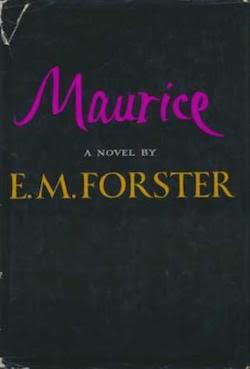 Written in 1913 but only published posthumously in 1971, Maurice was well ahead of its time in its nuanced depiction of a young man discovering and coming to terms with his sexuality. While Forster carefully examines the difficulties of identity and love, Maurice is ultimately founded on the belief that same-sex relationships have the capacity to be profound, beautiful and happy—a radical thesis for a novel written when men were still routinely arrested and imprisoned for having sex with other men.
Written in 1913 but only published posthumously in 1971, Maurice was well ahead of its time in its nuanced depiction of a young man discovering and coming to terms with his sexuality. While Forster carefully examines the difficulties of identity and love, Maurice is ultimately founded on the belief that same-sex relationships have the capacity to be profound, beautiful and happy—a radical thesis for a novel written when men were still routinely arrested and imprisoned for having sex with other men. 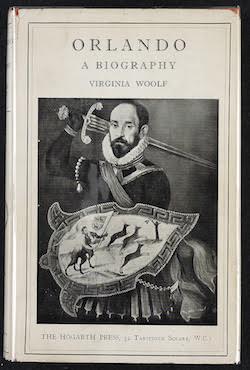 Subtitled “A Biography,” Orlando was written as a paean to Woolf’s friend and erstwhile lover, the aristocratic Vita Sackville-West. With typical élan, Woolf transforms Sackville-West into the novel’s eponymous protagonist, a sex-changing immortal who begins as an Elizabethan nobleman and ends as a successful female author in ‘the present day’ (that is to say, 1928). Traversing three hundred years of Orlando’s life, Woolf relentlessly questions conventional notions of history, authorship, gender and sexuality. Nightwood - Djuna Barnes (1936)
Subtitled “A Biography,” Orlando was written as a paean to Woolf’s friend and erstwhile lover, the aristocratic Vita Sackville-West. With typical élan, Woolf transforms Sackville-West into the novel’s eponymous protagonist, a sex-changing immortal who begins as an Elizabethan nobleman and ends as a successful female author in ‘the present day’ (that is to say, 1928). Traversing three hundred years of Orlando’s life, Woolf relentlessly questions conventional notions of history, authorship, gender and sexuality. Nightwood - Djuna Barnes (1936)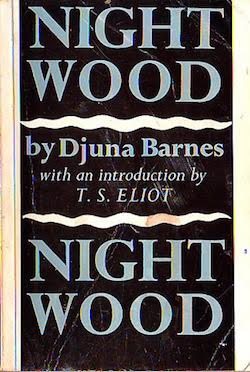 Contained in a deceptively slim volume, Nightwood is a superbly stylized portrait of a doomed lesbian relationship in the bohemian Paris of the interwar years, explicated through the head-spinning speeches of Dr. Matthew-Mighty-grain-of-salt-Dante-O'Conner (who is just as campy as his name suggests). This modernist masterpiece was lauded by T.S. Eliot as “so good a novel that only sensibilities trained on poetry can wholly appreciate it.” Notre Dame des Fleurs/Our Lady of the Flowers - Jean Genet (1943)
Contained in a deceptively slim volume, Nightwood is a superbly stylized portrait of a doomed lesbian relationship in the bohemian Paris of the interwar years, explicated through the head-spinning speeches of Dr. Matthew-Mighty-grain-of-salt-Dante-O'Conner (who is just as campy as his name suggests). This modernist masterpiece was lauded by T.S. Eliot as “so good a novel that only sensibilities trained on poetry can wholly appreciate it.” Notre Dame des Fleurs/Our Lady of the Flowers - Jean Genet (1943)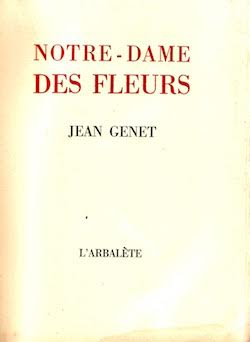 Similarly to Nightwood, this novel renders the Parisian underworld in prose so rich and revelatory it practically creates a new class of literature. The lives and loves of its central characters—sex workers, trans women, and teenage murderers, all bearing charming monikers like Divine and Darling Daintyfoot—are unspooled by a capricious narrator who creates the world of the novel while masturbating in his prison cell (!!!). The Charioteer - Mary Renault (1953)Renault, having worked as nurse at a British military hospital during the Second World
Similarly to Nightwood, this novel renders the Parisian underworld in prose so rich and revelatory it practically creates a new class of literature. The lives and loves of its central characters—sex workers, trans women, and teenage murderers, all bearing charming monikers like Divine and Darling Daintyfoot—are unspooled by a capricious narrator who creates the world of the novel while masturbating in his prison cell (!!!). The Charioteer - Mary Renault (1953)Renault, having worked as nurse at a British military hospital during the Second World 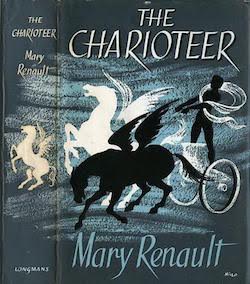 War and later emigrated to South Africa to live with her female partner, was uniquely equipped to write this novel, which follows a British soldier who falls in love twice over as he recovers from a combat wound. With equal measures of heartfelt psychological insight and cutting social observation, The Charioteer struggles with the tensions between idealism and reality, individualism and community, and innocence and experience. Another Country - James Baldwin (1962)An earlier novel of Baldwin’s, Giovanni’s Room, is often hailed as a masterpiece of gay literature, but while Giovanni’s Room is a claustrophobic investigation of one man’s psychology, Another Country seems to encompass an era.
War and later emigrated to South Africa to live with her female partner, was uniquely equipped to write this novel, which follows a British soldier who falls in love twice over as he recovers from a combat wound. With equal measures of heartfelt psychological insight and cutting social observation, The Charioteer struggles with the tensions between idealism and reality, individualism and community, and innocence and experience. Another Country - James Baldwin (1962)An earlier novel of Baldwin’s, Giovanni’s Room, is often hailed as a masterpiece of gay literature, but while Giovanni’s Room is a claustrophobic investigation of one man’s psychology, Another Country seems to encompass an era. 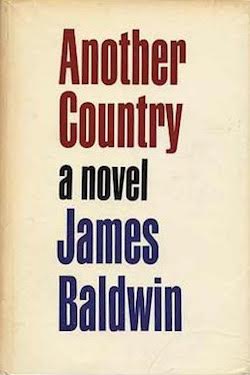 The characters are gay, straight, bisexual, questioning and in denial; white and black; working-class and middle-class and destitute and wildly successful. In a rhythm reminiscent of jazz, the novel traces the cast as they move in and out of each other’s lives, coupling and splitting up and getting back together, rising and falling in fortune—but always circling around the specter of a character who commits suicide at the end of the novel’s first act.
The characters are gay, straight, bisexual, questioning and in denial; white and black; working-class and middle-class and destitute and wildly successful. In a rhythm reminiscent of jazz, the novel traces the cast as they move in and out of each other’s lives, coupling and splitting up and getting back together, rising and falling in fortune—but always circling around the specter of a character who commits suicide at the end of the novel’s first act.